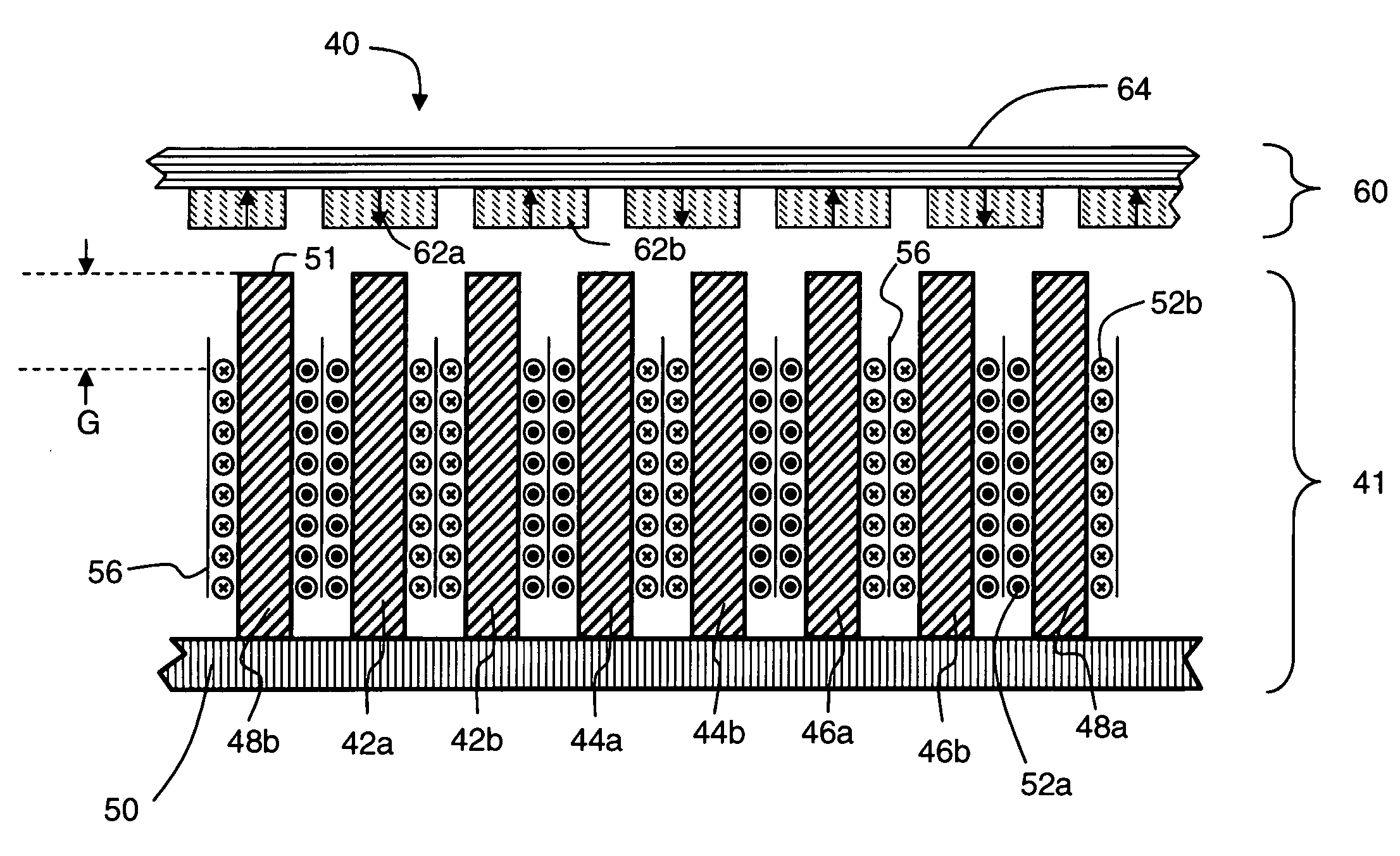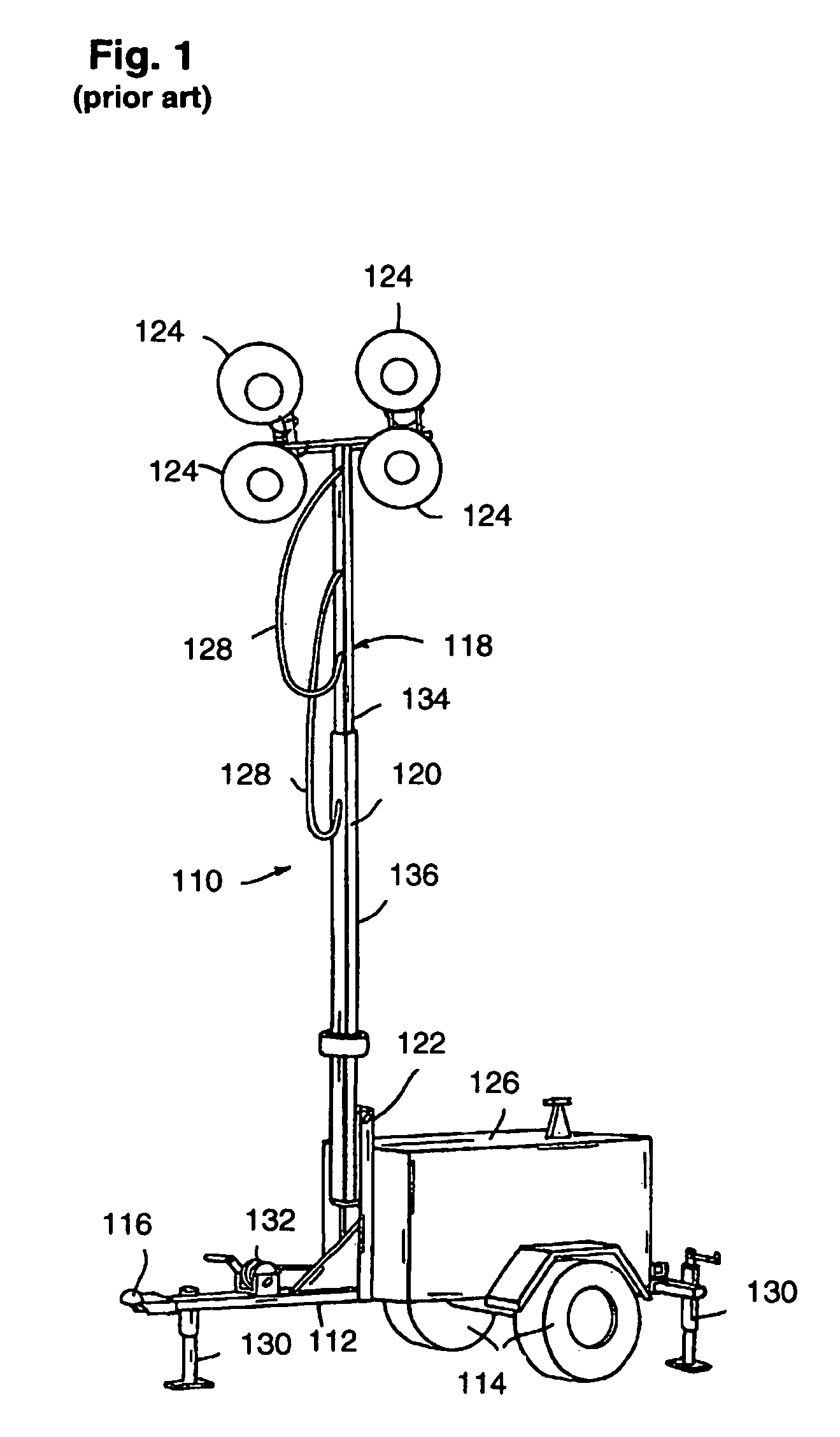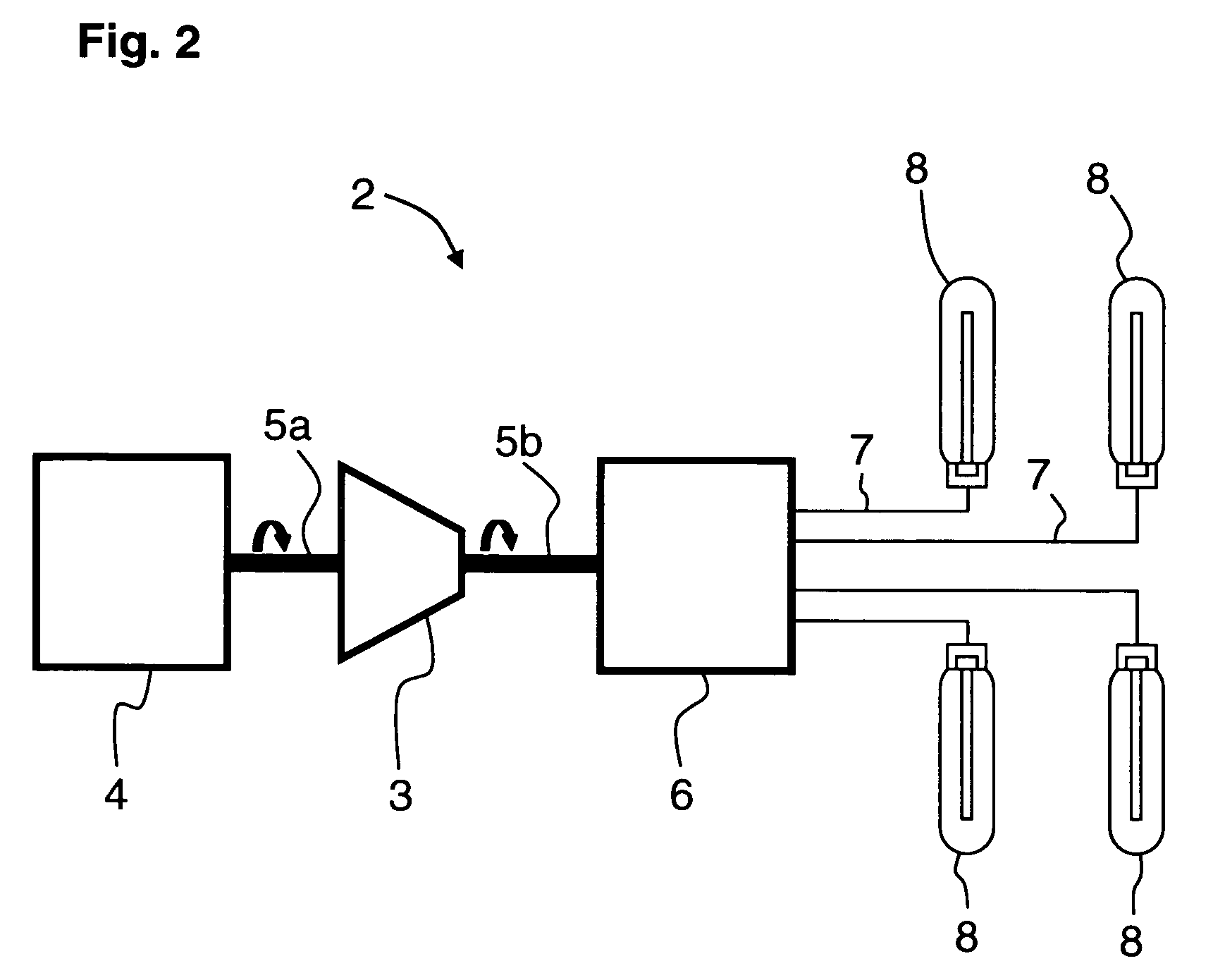High-intensity discharge lighting system and alternator power supply
a lighting system and high-intensity technology, applied in the field of high-intensity discharge lighting system and alternator power supply, can solve the problems of shortening the life of the lamp, insufficient electric field of the lamp, and virtually never designing a constant voltage supply for the hidden lamp circuit, etc., to achieve high efficiency, small core loss, and increase power
- Summary
- Abstract
- Description
- Claims
- Application Information
AI Technical Summary
Benefits of technology
Problems solved by technology
Method used
Image
Examples
example
[0109]An axial airgap stator useful in a four-phase alternator for an HID lighting system is designed with 48 teeth and slots. The stator has an OD of 200 mm, an ID of 120 mm, and a slot depth of 29 mm. The rotor has 36 poles and is formed using sintered NdFeB magnets. The alternator is designed to produce about 1 kW per phase to drive standard metal halide HID lamps, supplying a strike voltage of about 550 Vrms and an operating voltage of about 250 Vrms. A series of stator structures having a range of values of core tooth area “A”, average slot pitch “P”, slot width “w”, rotor side setback “G”, and coil axial length (equal to T-G) is considered using finite element analysis software running on a personal computer. Values of the inductance “L” and the inductance constant are calculated, wherein:
[0110]Kl=μAl(2)
L=N2Kl (3)
[0111]and μ is the effective permeability of the magnetic circuit, A the cross-sectional area, and N is the number of windings. K1 is further analyzed in terms of ...
PUM
 Login to View More
Login to View More Abstract
Description
Claims
Application Information
 Login to View More
Login to View More - R&D
- Intellectual Property
- Life Sciences
- Materials
- Tech Scout
- Unparalleled Data Quality
- Higher Quality Content
- 60% Fewer Hallucinations
Browse by: Latest US Patents, China's latest patents, Technical Efficacy Thesaurus, Application Domain, Technology Topic, Popular Technical Reports.
© 2025 PatSnap. All rights reserved.Legal|Privacy policy|Modern Slavery Act Transparency Statement|Sitemap|About US| Contact US: help@patsnap.com



